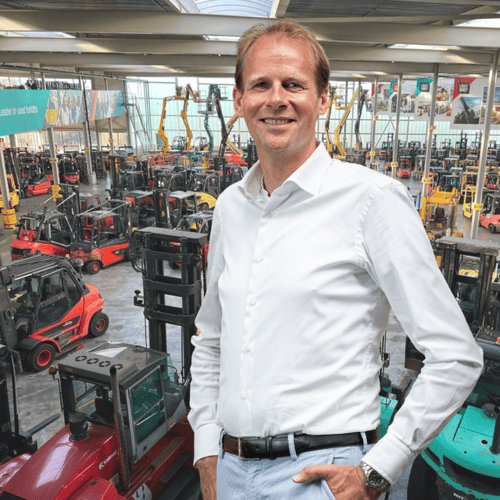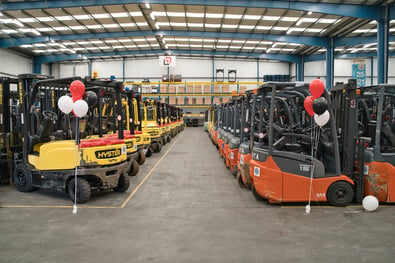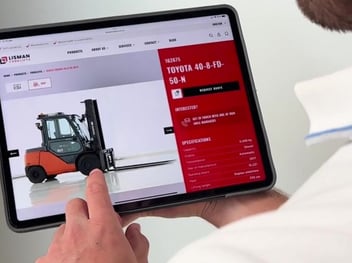МАШИНОБУДІВНА ГАЛУЗЬ: НАШ ПРОГНОЗ РИНКУ НА 2024 РІК
‘Europe is seeing a massive fall-back in the demand for new machinery’
With an eventful 2023 coming to a close, we’ve once again requested Koen Lisman, CEO of Lisman Forklifts, to share his views and expectations on the material handling manufacturing industry. Read all about his vision for 2024 in our new market outlook. Koen Lisman: ‘The market has changed and more changes are coming’.
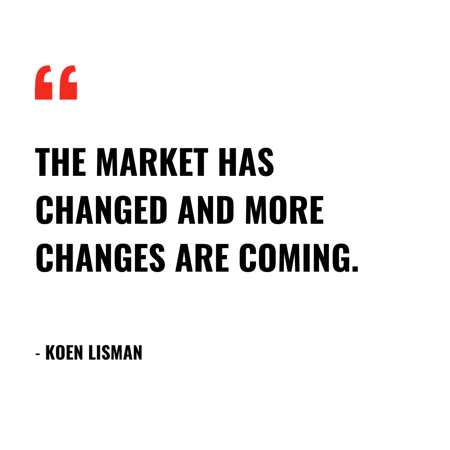
‘Our stock is your stock’
The first few months of the past year started in an unfamiliar fashion for Lisman. Where usually all storage facilities are crammed with used forklifts and all types of second hand material handling equipment, the company decided to sublease a machinery hall. “That was a new experience for us. Luckily it didn’t last too long before we were able to restock the building with our core-business: a wide variety of used machines.”
During the recent Customer Days everything ‘was business as usual’. “To say that stock is ‘overflowing’ might be a bit much, but we are – once again – able to offer our clients and partners an extensive selection of used machinery. The overall trend amongst our customers, partners and suppliers is a feeling of positivity – something we’ve surely noticed during our Customer Days. Yes, there’s demand. But, their urgency to maintain stock is low. That’s why we say: ‘Our stock is your stock’. As a pure wholesaler we want our customers to actively work with our stocks.”
Interest rates increase urgency
Looking at market developments within the industry, Lisman can be seen as a barometer. “Market trends often come to light quickly at our company”, outlines Koen. “Which is to be expected, looking at international scale and our position and connections within the market.” The most significant change has to be the fact that supply chains are no longer disrupted. “What has happened is that suppliers and manufacturers have caught up with delivery times. While in certain situations delivery times are still quite lengthy, supply chain issues in many cases have been solved.”
What followed was a vast increase in the delivery of new machines. And when there’s a lot of new machines entering the market, the offering of used machines grows. The rise in interest rates is another significant influence in market behaviour. “This means that financing equipment (new and used) has become a lot harder and a lot more expensive. This applies to our customers, but even more so to our suppliers. Our suppliers are often large corporate organisations that are not a big fan of ‘dead capital’ on the balance sheet. They’re looking to remove used machinery as soon as possible, due to the costly and complicated finance-ability and physical storage issues.”
“The growing interest rates also are a factor for suppliers: they are less willing to hold their own stock. They’re looking for ways to quickly shift machines. Moreover, there’s a clear sign that demand is reducing. And again interest plays a vital part. Customers want to buy, but it’s getting a lot harder to be able to do so.” This provided Lisman Forklifts with a new challenge. From a wholesaler scouring every nook and cranny all over the world for ‘ones’ and ‘twos’ (small purchases), Lisman now is back to its familiar inbound flow: large fleets of machines. A challenge the company is more accustomed to, but nevertheless a new situation that calls for a clear, straightforward approach.
Better buying expensive than not for sale
One of the effects the market situation caused was that the delta between the price of new and used forklifts declined. Up to the point of what you can call ‘unhealthy’. “Under the pretence of ‘rather buying expensive than not for sale’ newly-used machines became so scarce that they were practically at the same price level as new machines. Because this segment is becoming increasingly available – companies are no longer holding on to these machines to bridge the gap – the delta is restored. The market is normalising: used forklifts are now economically attractive and viable again.”
With used forklifts back at their own berth, there’s also a lot of activity at the selling-side of the scale. “Used forklifts and used machines have to be substantially less costly than new machines. Customers are buying second hand machines on the basis of business-economic considerations. And the price should fit the specific requirements and expectations.”
Lisman for its part will keep buying machines – with a smile. “We don’t say ‘no’ to machines and our partners. We’ll continue to help, not just when we’re in need of stock. But, we are taking a hard look at the configuration of machines and to what extent machines are multi-purpose and asked for. Our clients too are becoming more critical. It’s a buyer’s market, for now. In the near future the market will level out again – creating a healthy situation for all parties involved.”
Massive fallback in order intake
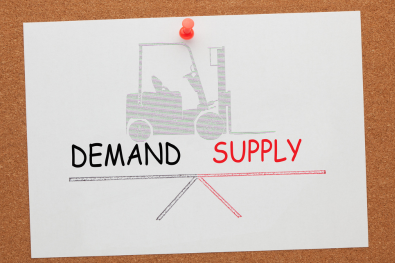 There’s more than a few reasons why things are getting back to normal. Some of them leaving a massive impact on the industry. In high volume markets such as Germany and France, there’s been a decline in order intake for new machines of as much as 30 percent or even more. “Substantially”, Koen emphasises. “What I am saying is that soon the temporary ‘tsunami’ of available machines will water down. Prices of used equipment will stabilise and demand will recover due to the attractiveness of used machines in relation to a new truck under economically challenging circumstances. This means that in about six months’ time there’s at least 30 percent less used forklifts available but demand will be strong.”
There’s more than a few reasons why things are getting back to normal. Some of them leaving a massive impact on the industry. In high volume markets such as Germany and France, there’s been a decline in order intake for new machines of as much as 30 percent or even more. “Substantially”, Koen emphasises. “What I am saying is that soon the temporary ‘tsunami’ of available machines will water down. Prices of used equipment will stabilise and demand will recover due to the attractiveness of used machines in relation to a new truck under economically challenging circumstances. This means that in about six months’ time there’s at least 30 percent less used forklifts available but demand will be strong.”
“Only last month when I visited a strategic OEM-partner in Germany, by far the biggest material handling equipment operating country in Europe, I heard something that confirms my expectations of temporary surpluses. In 2022, 116.000 new machines were sold in Germany. For the whole 2023 the projection has dropped all the way down to 78.000 units. Knowing this, I expect that there will be a new equilibrium between supply and demand. The significant decline in sales will have an impact on the availability of used machines in the 2024 market. Simply said: there’s going to be less used machines up for sale.”
Quality is up to standards again
Back to the current stock-situation. Because while Lisman is staying true to its market promise and in fact does buy any machine – no matter its make, no matter its state – Koen does see a clear transformation when walking through the Lisman facilities. “The quality of the used machines that become available is getting a lot better. During Covid machines would get completely worn-out. High operating hours, heavy deployment – the state of the machines was generally rough. Now we’re seeing a fast growing number of used machines that are more up to general second-hand standards again.”
‘China’ proves it’s here to stay
Just like in our earlier market outlook this year, we have to address the up and coming Chinese material handling equipment market. Chinese forklifts, especially electrical forklifts powered by lithium-ion batteries, pose a growing ‘threat’ for traditional European and American manufacturers. “China is here. As a market leader in the use of lithium-ion batteries, Chinese manufacturers benefit from a price advantage. On various levels, I have to add. During Covid the transport costs of shipping containers were sky-high. These costs have dropped, making Chinese forklifts a cheaper product as a whole. A product that directly competes with used machines of Western make.”
And there’s another evolution taking place in the material handling machinery manufacturing industry: the market is less fragmented. The big brands keep getting bigger, leading entities and holdings continue to invest and expand. “The market is consolidating. The only smaller manufacturers that remain are companies that are serving niche products to niche markets. They’re maintaining based on specialism. Consolidation automatically means transparency. There’s less ‘players’, less variation and more standardisation, which in the end leads to market pressure.”
Everything happening right now is fully in line with expectations. “Unfortunately we can’t exactly map out the timeline. That would make things a lot easier, haha. But I’m happy with the current situation. Where we are as a market and our position too. Walking through our facilities, there’s a new dynamic. And while our Logistical Team might stress out a little every now and then, I’m glad to see there’s a lot of stock, a lot of things happening and a lot of action going on. That’s exactly what I want to see. We will keep on sustaining our position of an authority, a reliable high-volume player in supply and demand.”

